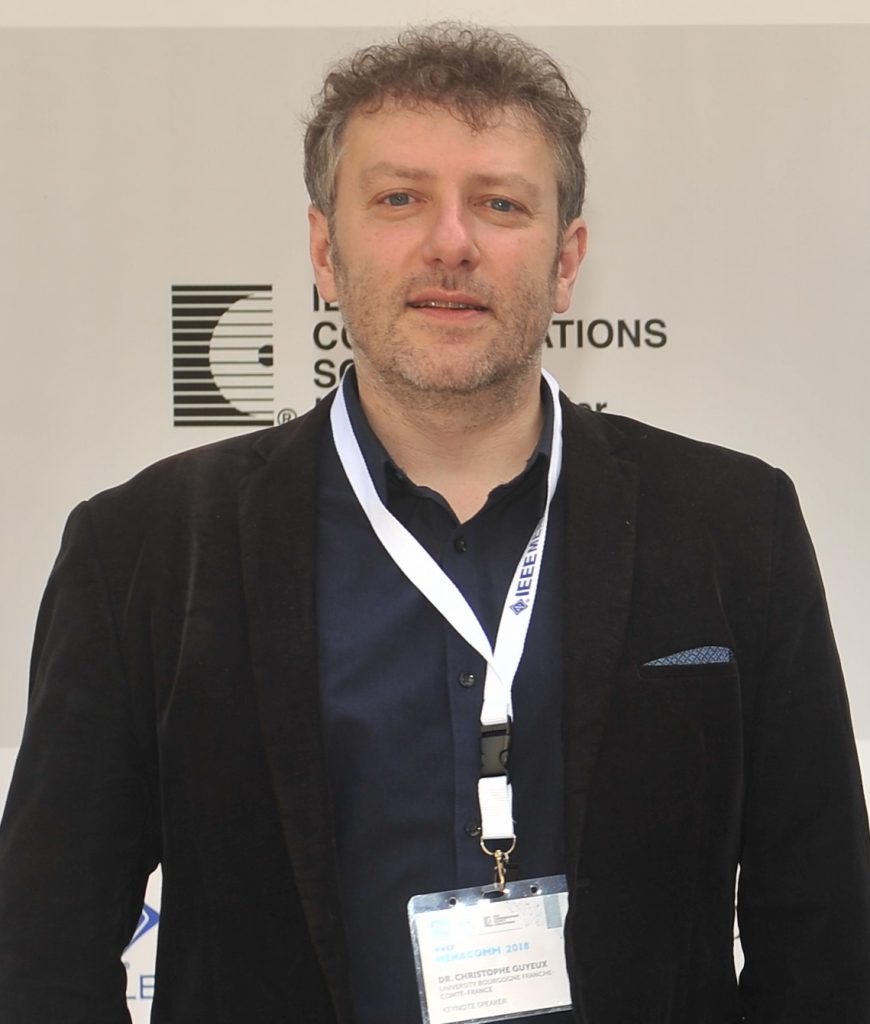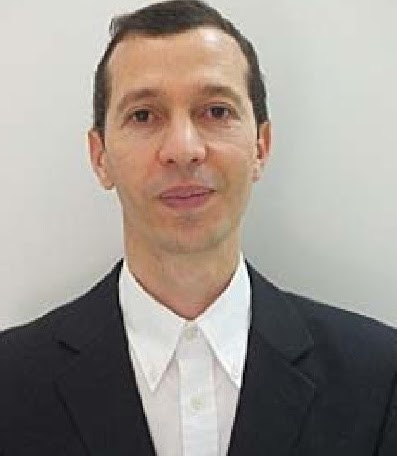Past Seminars
On Monday, March 3, Mr. Christophe Guyeux and Mr. Lyes Khoukhi came to give a seminar at the CNAM at 10 a.m. and 11 a.m., respectively.
Here is some information about these past seminars.
Speaker : M. Christophe Guyeux (Monday, March 3, 2025 at 10 a.m.).

Title: A particular framework for desired properties in constrained systems: a topological approach for IoT.
Abstract : It is not always possible to deploy cryptographically proven secure algorithms, at least as they should be rigorously secure, for example in certain constrained situations where resources are limited. Specific behaviors of these systems, allowing to achieve a certain security, are however desired and sought after (mixing or ergodicity, pseudo-randomness, expansiveness…), and one would like to be able to compare algorithms from the literature with each other, in terms of these properties and in these particular contexts. We have developed a concrete approach to provide a framework for these properties, making it possible to evaluate them when the usual cryptographic approach is not completely appropriate, while remaining compatible with the latter.
In this seminar, we will see what such an approach inherited from dynamic systems can bring, in contexts such as ad hoc wireless networks. We will discuss for example certain coverage guarantees even in the presence of sleeps, the diffusion of information in the network, the successful transmission of any node to the sink, or the failure in black hole attacks or node deletion attacks…
About : Christophe Guyeux has been a professor at the FEMTO-ST laboratory, Department of Complex Systems Computing at the Marie and Louis Pasteur University (formerly Univ. de Franche-Comté) since 2014. His work focuses primarily on computer security, artificial intelligence, and sensor networks, often with an interdisciplinary approach. His research tends toward practical utility, notably in the direction of an interreg on IoT for firefighters, and a joint public-private laboratory (ANR LabCom) for the industrialization of AI-based solutions for civil security and health.
Speaker : M. Lyes Khoukhi (Monday, March 3, 2025 at 11 a.m.).

Title : New vision of trust in connected networks: secure behavioral models.
Abstract : Dealing with trust challenges in connected networks remains as one of the serious security hot topics because of the new nature of attacks. Recently, there has been a huge increase in the number of threats and cyber attacks on critical connected networks/infrastructures (like V2X, IoT and 5G, Cloud, and Smart grids); these attacks continue to grow at a rapid rate and cause huge damage at both end-users and data/network operators sides. Several efforts have been conducted by both industry and academia to propose countermeasures solutions, but some of them still suffering from either non scalability or limitive risks hypotheses.
In this seminar, we present a new vision of trust in connected networks by presenting a set of behavioral-based models to mitigate attacks in connected networks showing the need to cope with the new emerging threats, ranging from data leakage to collaborative attacks. Our models are not limited by the need of new attack patterns/signatures (to prevent them to fall within zero-day threat). We also present the future vision of securing connected networks while respecting the standards requirements.
About : Lyes Khoukhi is Full Professor of cybersecurity at ENSICAEN (with CNRS GREYC UMR laboratory), Caen, France. He received his Ph.D. degree in computer engineering from the University of Sherbrooke, Canada, in 2006. Between 2007 and 2008, he was a researcher with the Department of Computer Science and Operations Research, University of Montreal in collaboration with Bell-Canada. In 2008, he also worked for Dialexia Corporation-Montreal, in the development of safe communications solutions. In 2009, he joined UTT -University of Technology of Troyes- as assistant professor, where he became Full professor at 2018. Since 2020, he joined, as Full professor, ENSICAEN, Normandie University where he is involved in several responsabilities and collective works. His research interests include conception of defense lines, prediction and attacks detection, malicious behaviors modeling and privacy preserving. His target areas are IoT, V2X, MEC, and 5G/6G. He has participated as a General chair or program chair for many conferences (like IEEE LCN, IEEE ICC Symposiums). He is the Guest Editor of special issues, like Springer journal of Annals of Telecommunications of the SI (Internet of Vehicles & Smart City)-2020, about security and protocols issues in V2X. He is also the SIG leader of “Machine Learning for IoT and ad hoc networks” of the IoT ASHN ComSoc Committee of IEEE Communications Society.
Laboratory Seminar
Approximately every 3 months, one of the laboratory’s 8 teams takes charge of a session of the laboratory seminar, in the form of a popular presentation linked to the team’s themes.
The next CEDRIC laboratory seminar will take place on Wednesday, May 28, starting at 2 p.m., in the Laussédat amphitheater (31.3.30). It will be organized by the OC team, and the two speakers will be Christophe Picouleau and Dimitri Watel.
Title : Reconstruction of graphs and hypergraphs.
Abstract : Many problems involve trying to reconstruct a structure, in this case a graph or a hypergraph, from partial information about this structure. This information includes, but is not limited to: projections of adjacent matrices, degree sequences, and the complete or incomplete structure of vertex or edge neighborhoods. This partial information can be seen as a query on the graph, or as imperfect knowledge because it is seen through a transformation of the graph. We will show two typical examples of such problems.
The first consists, given partial information from a (hyper)graph, in determining whether there are at least two (hyper)graphs that can match this information. For example, two k-regular graphs of the same size will give the same degree sequence, so there is no uniqueness in this case. We say that they are not uniquely reconstructable by the query “degree sequence”. Unique reconstruction is important because it ensures that the information, even partial, is sufficient to reconstruct the entire graph without ambiguity. The presentation will focus on a very specific type of query: for each triplet of vertices in a graph, we know if one of the three is connected to the other two, but that these other two are not connected. In other words, these 3 vertices form a chain. We will explain the key ideas for deducing the uniquely reconstructable graphs for this query.
The second consists, knowing partial information, in determining whether there exists at least one (hyper)graph that corresponds to this information. Given a hypergraph, the intersection graph of its hyperedges has the hyperedges as vertex set, and two vertices are connected if the two hyperedges intersect. This generalizes the notion of line-graph for the case of simple graphs. The associated reconstruction problem then consists, given a graph, in deciding whether it can be the intersection graph of a hypergraph. For the case of line-graphs, the problem is indeed solving, both structurally and algorithmically. It is quite different for hypergraphs, even in the case of 3-uniform hypergraphs (each hyperedge contains 3 vertices). We will give some results of an algorithmic nature for 2-intersection graphs (intersection by at least 2 vertices) of 3-uniform hypergraphs.
Former seminaries
On Friday, March 7, 2025, a CEDRIC laboratory seminar session took place from 2 p.m. to 5 p.m. It was organized by the ROC team, and we welcomed Sara Tucci, director of CEA List, to the Robert Faure Amphitheater (Z) at the CNAM.

Title: Understanding the Ethereum’s Proof-of-Stake Protocol.
Abstract: Ethereum’s recent upgrade, known as the Merge, transitioned the blockchain to a Proof-of-Stake model, introducing an original consensus protocol that combines elements of both Nakamoto-style and Byzantine Fault Tolerance designs. This shift led to a complex protocol that, at the time of implementation, was only partially documented. In this talk, I will present our analysis of Ethereum’s Proof-of-Stake protocol, examining its safety, liveness, and incentive compatibility across various network models. Our findings reveal that, in an eventually synchronous network without participant churn, Ethereum’s Proof-of-Stake protocol ensures safety but achieves only probabilistic liveness. Moreover, with the inclusion of the Inactivity Leak mechanism—which removes inactive validators—we identified potential safety vulnerabilities. Finally, we demonstrate that the protocol ensures incentive compatibility in a synchronous setting and achieves eventual incentive compatibility in an eventually synchronous environment.
His presentation was followed by a presentation by Billel Hakem, a doctoral student in the ROC team.
Title: Synthetic data generation for predictive maintenance.
Abstract: Predictive maintenance aim at detecting anomalies and predictive the remaining useful life of industrial systems using sensor data and deep learning algorithms. Due to concern of data privacy and data scarcity, there’s a need to explore alternate alternative to acquire enough data for predictive maintenance systems. We propose a physical simulation for data generation and a test on a diagnosis and prognosis task.
There was also a brainstorming session and a poster session.
